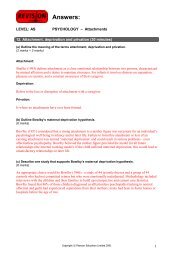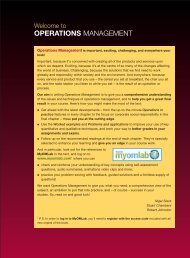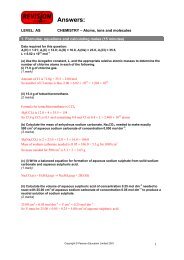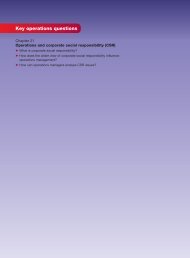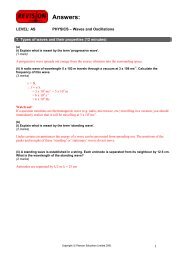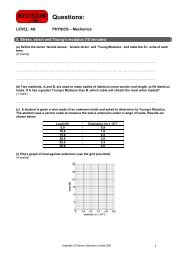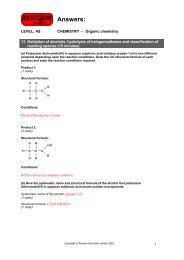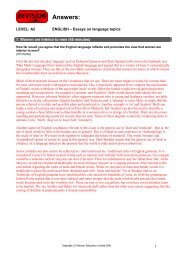The Dove Campaign for Real Beauty - Pearson
The Dove Campaign for Real Beauty - Pearson
The Dove Campaign for Real Beauty - Pearson
You also want an ePaper? Increase the reach of your titles
YUMPU automatically turns print PDFs into web optimized ePapers that Google loves.
Part 1 Marketing now…2.1Unilever’s <strong>Dove</strong> brand is on a mission to change all of this. Its <strong>Campaign</strong> <strong>for</strong><strong>Real</strong> <strong>Beauty</strong> hopes to do more than just sell <strong>Dove</strong> beauty creams and lotions. Itaims to change the traditional definition of beauty – to ‘offer in its place a broader,healthier, more democratic view of beauty’. It tells women to be happy just the waythey are. ‘In <strong>Dove</strong> ads,’ says one advertising expert, ‘normal is the new beautiful.’It all started with a Unilever study that examined the impact on women of asociety that narrowly defines beauty by the images seen in entertainment, inadvertising and on fashion catwalks. <strong>The</strong> startling result: only 2 per cent of 3,300women and girls surveyed in 10 countries around the world considered themselvesbeautiful. Unilever’s research revealed that among women ages 15 to 64 worldwide,90 per cent want to change at least one aspect of their physical appearanceand a staggering 67 per cent withdraw from some life-engaging activities becausethey are uncom<strong>for</strong>table with their looks.Unilever concluded: ‘It is time to redefine beauty!’ ‘We believe that beautycomes in different shapes, sizes and ages,’ says <strong>Dove</strong> marketing director PhilippeHarousseau. ‘Our mission is to make more women feel beautiful every day bybroadening the definition of beauty.’ Unilever launched the <strong>Dove</strong> <strong>Campaign</strong> <strong>for</strong><strong>Real</strong> <strong>Beauty</strong> globally in 2004, with ads that featured candid and confident images ofreal women of all types (not just actresses or models) and headlines that promptedconsumers to ponder their perceptions of beauty. Among others, it featured fullbodiedwomen (‘Oversized or Outstanding?’), older women (‘Gray or Gorgeous?’;‘Wrinkled or Wonderful?’) and a heavily freckled woman (‘Flawed or Flawless?’).In 2005, the campaign’s popularity skyrocketed as <strong>Dove</strong> introduced six new ‘realbeauties’ of various ethnicities and proportions, in sizes ranging from 6 to 14.<strong>The</strong>se women appeared in magazines and on billboards wearing nothing but theirunderwear and big smiles, with headlines proclaiming, ‘Let’s face it, firming thethighs of a size 2 supermodel is no challenge,’ or ‘New <strong>Dove</strong> Firming: As Tested on<strong>Real</strong> Curves.’In 2006, Unilever took the <strong>Dove</strong> campaign to a new level, with a ground-breakingspot in the mother of all ad showcases, the US Super Bowl. This ad did not featurecurvy, confident women. Instead, it presented young girls battling self-esteemissues – not models but real girls picked from schools, sports leagues and GirlScout troops. In the ad, one dark-haired girl ‘wishes she were a blond’. Another‘thinks she’s ugly’. A pretty young redhead ‘hates her freckles’. <strong>The</strong> ad alsopromoted the <strong>Dove</strong> Self-Esteem Fund, which supports, among other causes,the Girl Scouts’ Uniquely Me programme. It urged viewers to ‘get involved’ at thecampaign<strong>for</strong>realbeauty.com website.74




